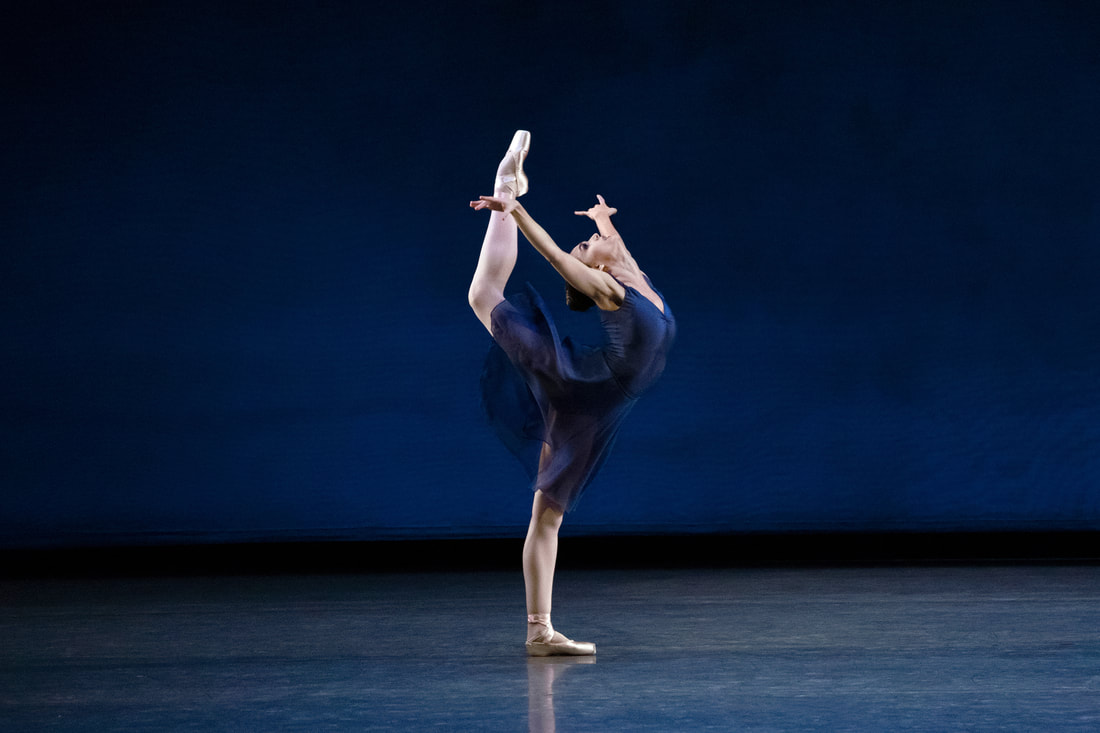|
Lauren Lovette as she appeared on Saturday afternoon in Jerome Robbins' "Opus 19/The Dreamer" at Lincoln Center at her final performance with New York City Ballet, (Photo by Erin Baiano) After months of pandemic shutdowns and digital performances, New York City Ballet has rebooted, opening its Lincoln Center doors to patrons once again.
And while in-person performances are enthusiastically welcome, even for the staid New York audience, this season also marks endings. Principals Abi Stafford, Ask LaCour and Maria Kowroski are retiring. And so too is Lauren Lovette. The vivacious and spritely dancer made her final curtain call on Saturday afternoon in a program that revealed her ability to sweep up her audience in otherworldly romance. It started with Jerome Robbins “Opus 19/The Dreamer.” And then George Balanchine’s “Serenade,” In both, she was, as usual, charming. In “Opus 19/The Dreamer,” she danced the ethereal force that soothes the tortured soul of the dreamer, Joseph Gordon. He expressed his anguish by tossing his arms and head about as an army of 14 corps dancers watch over him – side stepping, but containing his distress. Among the corps emerges Lovette — who is a wave – moving in and out of Gordon’s dream as a balm. Yet she was also a power to propel him forward in a chase for the elusive embrace. Not surprisingly, Lovette was ideal. I like this work, set to Prokofiev’s Violin Concerto No. 1 in D Major with soloist Kurt Nikkanen, not only because it is spiritual, but because it is one of Robbins’ many nods to the masterful Balanchine. For example, Lovette’s part underscores Balanchine’s affection for women as mystical, unattainable creatures while Gordon’s part took inspiration from Balanchine’s “Apollo,” a portrait of a man struggling with himself. While a beautiful work, nothing is more satisfying than “Serenade.” This rightly beloved ballet, set to Tchaikovsky’s Serenade for Strings, was also perfect vehicle for Lovette who appeared as the woman touched by and transcending death. Her tiny frame revealed her sympathetic fragility. And the ending, with her being raised to the heavens in a surrendering backbend, was symbolic of Lovette’s departure. She gave her all to ballet and thus the audience, and now will ascend in honor to a new life chapter. The afternoon also included a pas de deux by Mauro Bigonzetti for Kowroski and Amar Ramasar, who himself will retire in the spring. “Amaria” or “to Maria,” is set to Scarlatti sonatas, as performed at the piano by Craig Baldwin. Kowroski, in slippers, and Ramasar entangled in a duet that emphasized their flexibility and long and limber limbs. But mainly, it too was symbolic, showing that both dancers – so central to City Ballet – are cutting their attachments, no longer marionettes for a choreographer, but forever strong, memorable figures just the same. Of course, as tradition dictates, the company joined Lovette onstage for her final, flower-filled bow – a moving tribute that will be repeated next week when Kowroski departs. It’s the dawn of a new era at City Ballet.
0 Comments
Leave a Reply. |
Wendy
|

 RSS Feed
RSS Feed
